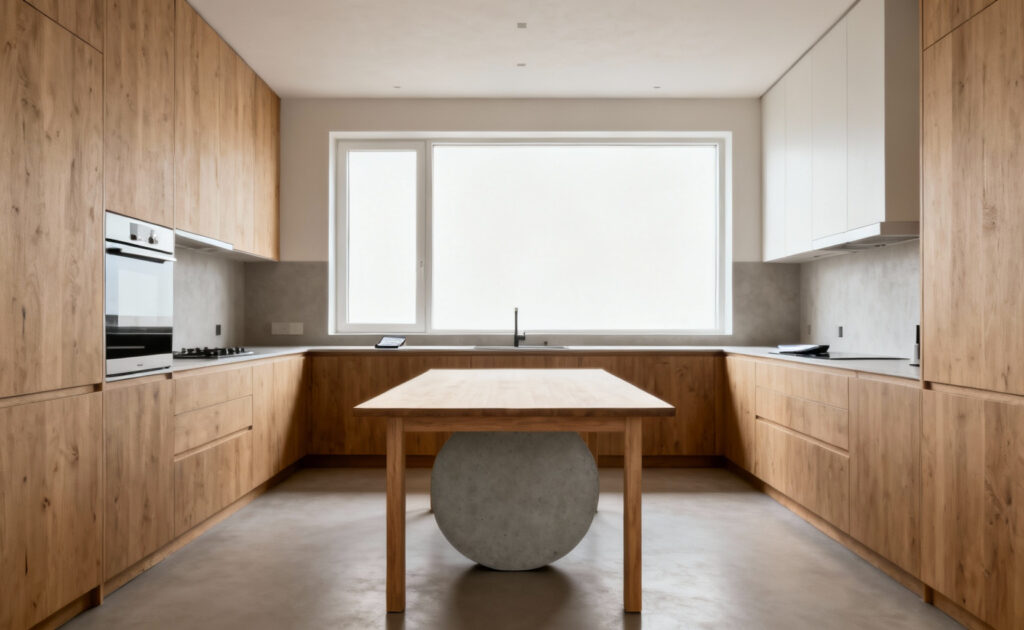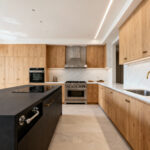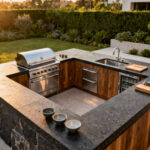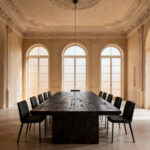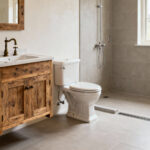I remember hosting a bustling brunch once, the kind where every surface is covered with platters and the air is thick with laughter. As I tried to navigate from the oven to the table with a hot quiche, I did this little side-shuffle, a small, awkward dance to avoid a guest’s chair. Nobody noticed, but I did. That fleeting moment—that tiny bit of friction in the flow of hospitality—is exactly what separates a kitchen that simply has furniture from one that is intentionally designed for living.
The kitchen table is so much more than wood and legs; it’s the command center for homework, the unofficial office, the stage for late-night talks over a glass of wine. Choosing the right one is about finding a piece that doesn’t just fit your space, but fits your life. As someone who has spent years designing kitchens that work as beautifully for a Tuesday night taco bar as they do for a Thanksgiving feast, I know that the right table can change the entire rhythm of a home. It’s not just about aesthetics; it’s about making everyday moments and special celebrations feel more effortless and connected.
Essential Modern Kitchen Table Fundamentals (Part 1)
Let’s start with the basics. Before we get into the finer points of style and integration, we have to lay a strong foundation. Getting these initial decisions right ensures that your table isn’t just beautiful, but a practical partner in your daily life.
1. Selecting the Ideal Footprint: Harmonizing Table Size with Kitchen Scale
The most beautiful table in the world will feel wrong if it cramps your space. Before you fall in love with a style, grab a tape measure. The non-negotiable rule is to leave at least 36 inches of clearance between the table’s edge and any wall or countertop. This gives you enough room to pull out chairs and, more importantly, create clear pathways for foot traffic. Think about carrying a hot pot of soup or a tray of drinks; you don’t want to be navigating an obstacle course.
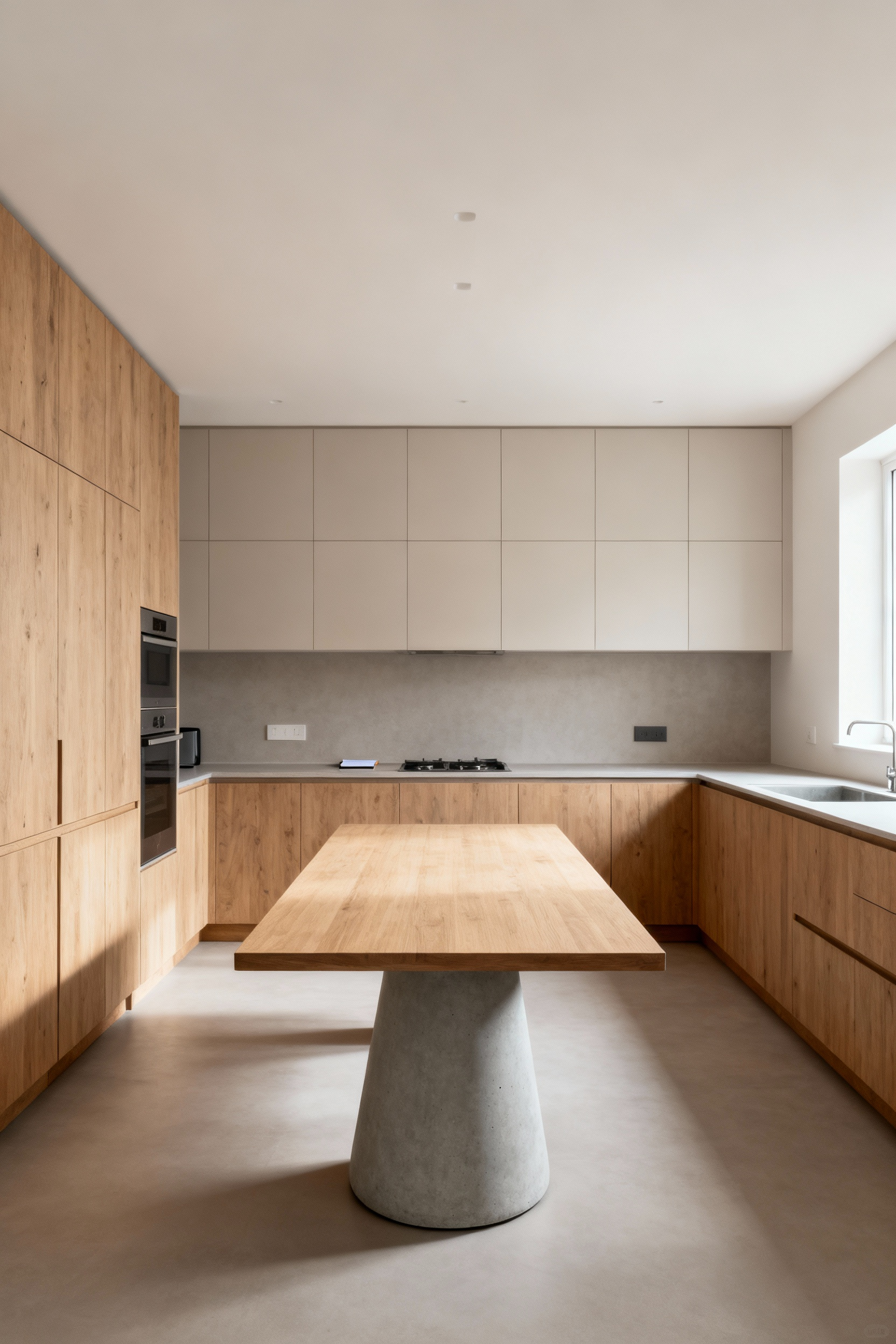
Once you have the basics down, consider the flow. A long, rectangular table might be perfect for anchoring a galley-style kitchen, while a round table can soften a boxy room and make it feel more open and social. From my work in kitchen workflow design, I’ve seen that a table’s footprint can make or break the efficiency of the classic “work triangle” (sink, stove, fridge). Make sure your path between these crucial zones is completely unobstructed. The goal is a table that not only fits your room but enhances the way you move within it.
2. Decoding Materiality: Embracing Wood, Metal, or Stone for Enduring Style
The material of your modern kitchen table sets the tone for the entire room. Wood, with its natural warmth and unique grain, feels grounding and timeless, aging gracefully with the stories of your family. Metal brings a sharp, industrial edge, while a stone or quartz top lends a sense of cool, durable sophistication. Each choice has its own personality and its own demands for care.

Think honestly about how you live. If you have kids who treat the table like an art station, a porous marble that stains with a stray drop of juice might be a source of constant stress. A resilient quartz composite or a solid wood table with a forgiving finish might be a better fit. It’s also about the senses—the cool smoothness of stone, the organic texture of wood. These materials should feel as good as they look and stand up to the beautiful mess of a life well-lived.
3. Integrating Form and Function: Choosing Shapes that Enhance Flow
The shape of your table directly influences how you interact around it. Rectangular tables are classics for a reason—they fit well in most rooms and are perfect for defining a formal dining zone. But in a tighter space or a home that values conversation, a round table is a game-changer. With no head of the table, everyone feels equally included, and passing serving dishes is a breeze.
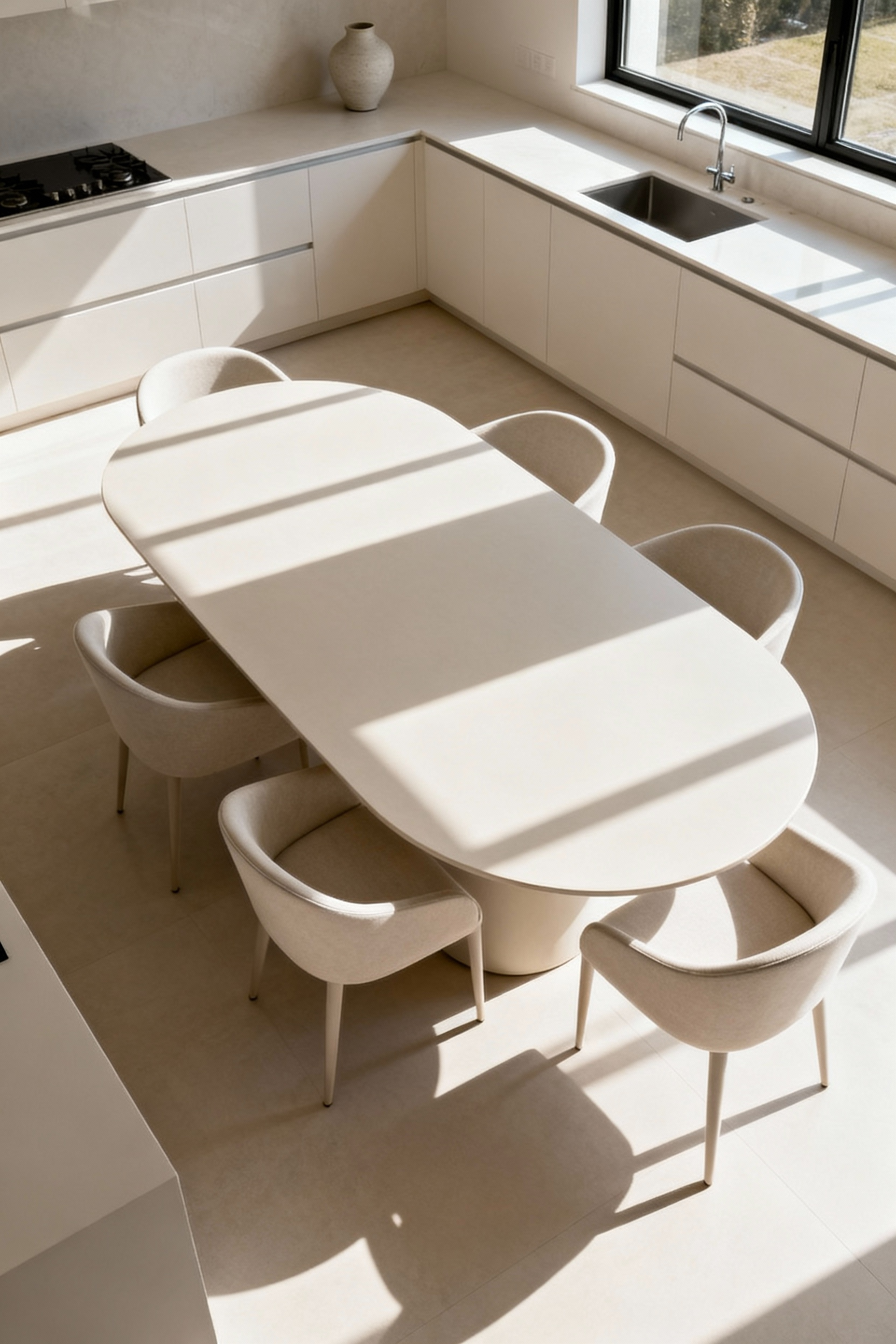
Ovals offer a wonderful compromise, giving you the generous length of a rectangle but with softened corners that are much friendlier to navigate around—a huge plus in high-traffic areas. I often suggest oval tables for families with young children to minimize bumped heads. It’s a small detail, but these are the things that make a space feel thoughtfully designed. A table’s shape shouldn’t just be an aesthetic choice; it should actively support the kind of gatherings you want to have.
4. Considering Leg Architecture: Impact on Aesthetics and Seating Ergonomics
Don’t overlook the legs! They’re not just for holding the table up; they have a massive impact on both style and comfort. A classic four-leg design is stable, but it can be frustrating when you’re trying to squeeze in an extra guest and they’re stuck straddling a leg. A pedestal or trestle base is often the hero here, opening up the perimeter and offering maximum flexibility for seating.
The style of the legs also defines the table’s character. Slender, tapered legs can make a heavy tabletop appear to float, creating a sense of lightness and space. Chunky, substantial legs ground a room and give the table a strong presence. Just be sure to sit at a table before you buy it, if you can. Make sure there’s enough knee clearance and that the leg design doesn’t interfere with pushing chairs in all the way. Function, as always, must go hand-in-hand with form.
Essential Modern Kitchen Table Fundamentals (Part 2)
Now that we’ve covered the core structure, let’s talk about the finishing touches that bring a table to life. These details—the surface finish and how it plays with light—are what elevate a functional piece into a truly stunning centerpiece.
5. Mastering Finishes: Reflecting Light and Durability for Daily Life
The finish of your modern kitchen table does two critical jobs: it protects the surface and it manipulates light. A glossy, lacquered finish will bounce light around the room, making a space feel brighter and more expansive. It’s a fantastic choice for smaller, darker kitchens, but be aware that it will also show every fingerprint and smudge. It’s a trade-off.
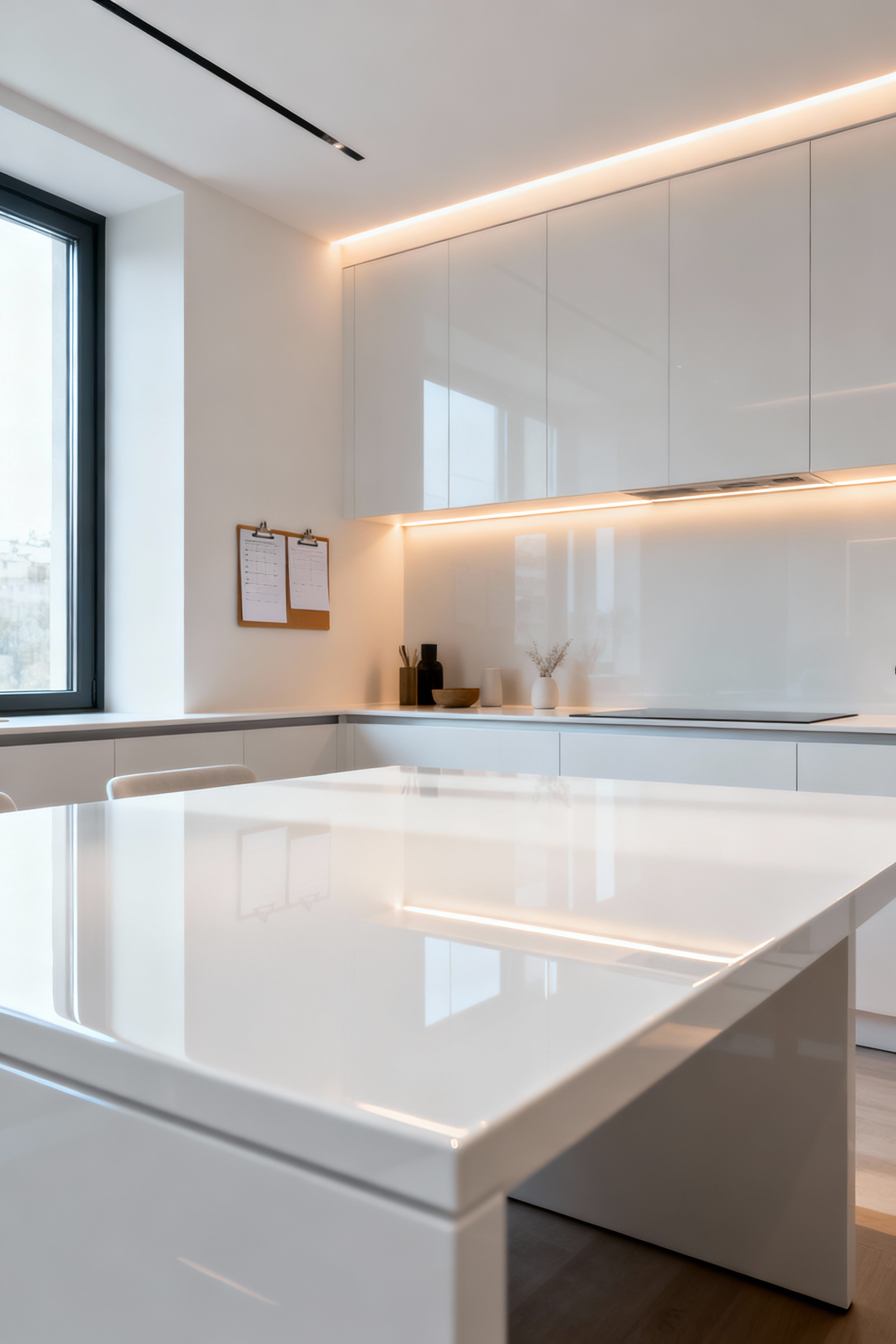
On the other hand, a matte or satin finish absorbs light, creating a softer, more subtle effect that can feel very calming and sophisticated. This is often more forgiving for daily use. I learned this when working on a kitchen with intense morning sun: a high-gloss table created a blinding glare, but switching to a honed stone top diffused the light beautifully and made the space usable all day. Consider the natural and artificial light in your kitchen. Your table’s finish should work in harmony with it, creating an atmosphere that feels right from your first cup of coffee to a candlelit dinner.
Elevating Your Modern Kitchen Table Approach (Part 1)
With the fundamentals in place, we can begin to think like designers. This is about more than just picking a table; it’s about curating a cohesive and dynamic dining hub that feels perfectly integrated into your kitchen’s broader story.
6. Harmonizing with Cabinetry: Achieving Cohesive Material and Color Palettes
Your modern kitchen table doesn’t exist in a vacuum; it’s in constant conversation with your cabinetry. You can choose to have it harmonize or create a deliberate, stylish contrast. To create a calm, unified look, pull a material or color from your cabinets into the table—a light oak table paired with natural oak cabinets, for example, creates a serene, seamless feel.
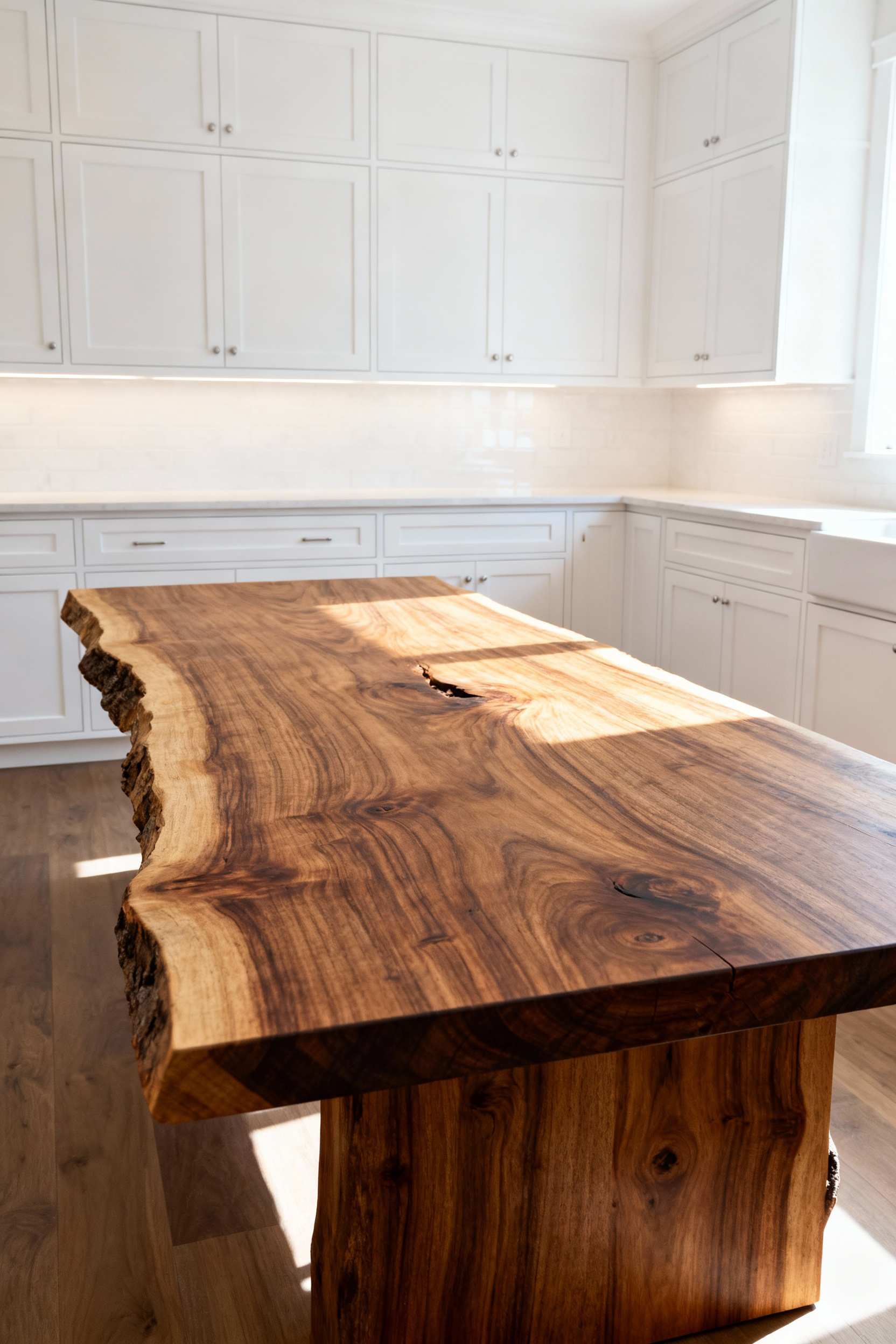
Alternatively, contrast can be beautiful. If you have sleek, dark cabinets, a table made from warm, reclaimed wood can add incredible texture and personality. The key is to find a common thread. Perhaps the metal on the table base matches your cabinet hardware, or the stone tabletop picks up a veining color from your backsplash. What I tell my clients is to think of it like putting together an outfit—the pieces don’t have to match, but they have to go together. This thoughtful connection is what makes a design feel intentional and high-end.
7. Optimizing Seating Arrangements: Integrating Chairs and Benches for Versatile Dynamics
The seating you choose completely changes the table’s dynamic. While a matching set of chairs is classic, mixing it up with a bench can be both stylish and incredibly practical. A bench pushed against a wall can save a ton of space and is wonderful for wiggling kids. It creates a cozy, communal feel that’s perfect for casual family meals.
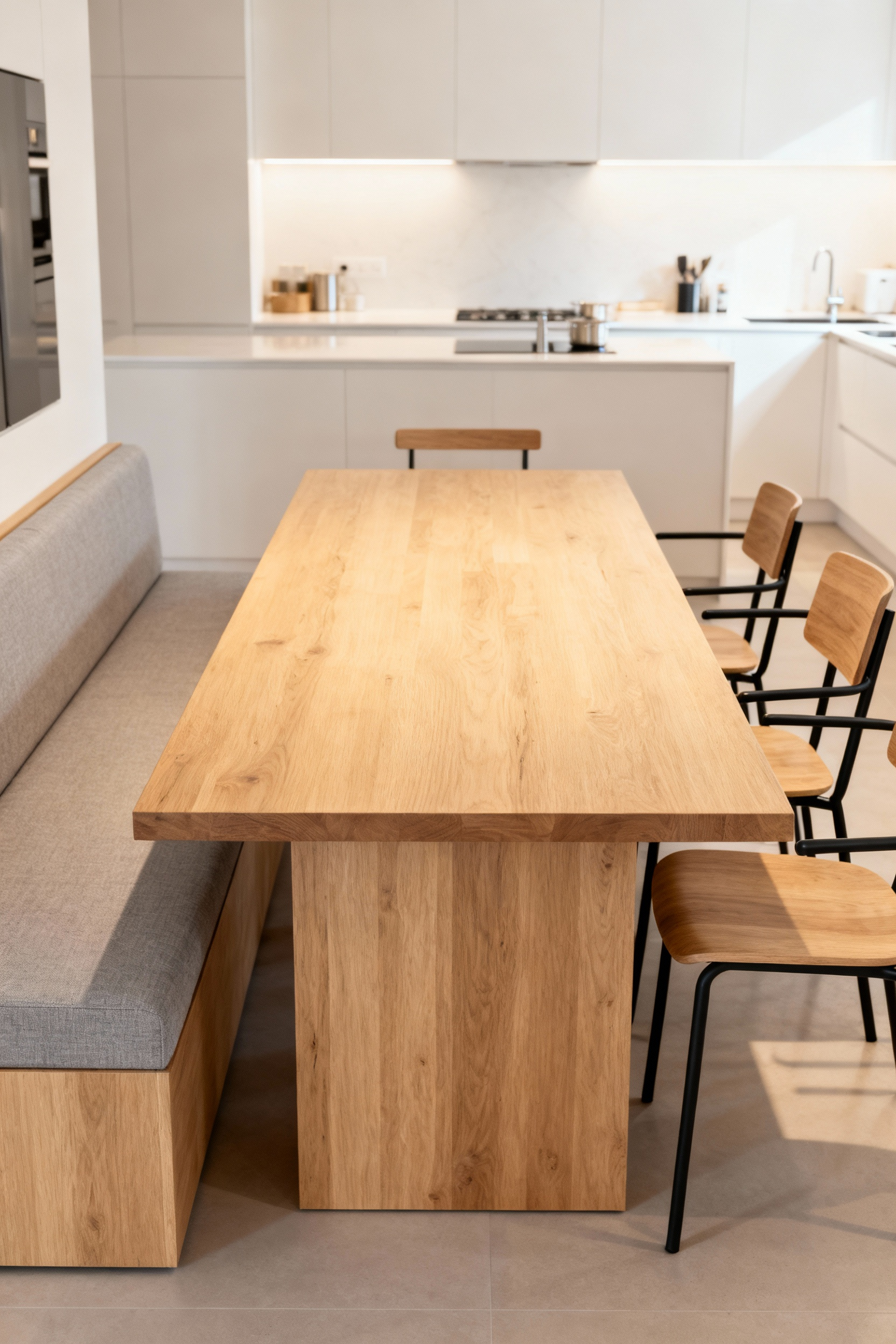
Pairing a bench on one side with individual chairs on the other gives you the best of both worlds: efficient, cozy seating and the comfort of a supportive back for adults. Think about materiality here, too. Upholstered chairs can soften the hard surfaces of a kitchen, while sculptural metal or molded plastic chairs can add a modern edge. Your seating shouldn’t be an afterthought; it’s an opportunity to add comfort, save space, and inject personality.
8. Incorporating Strategic Lighting: Illuminating Your Dining Hub with Purpose
The right light fixture over your table is like the perfect piece of jewelry—it completes the look. Functionally, you need good task lighting for meals, homework, or prep work. But emotionally, lighting sets the mood. A beautiful pendant light, hung at the right height (typically 30-36 inches above the tabletop), creates an intimate pool of light that defines the dining area as its own distinct zone, even in an open-concept space.
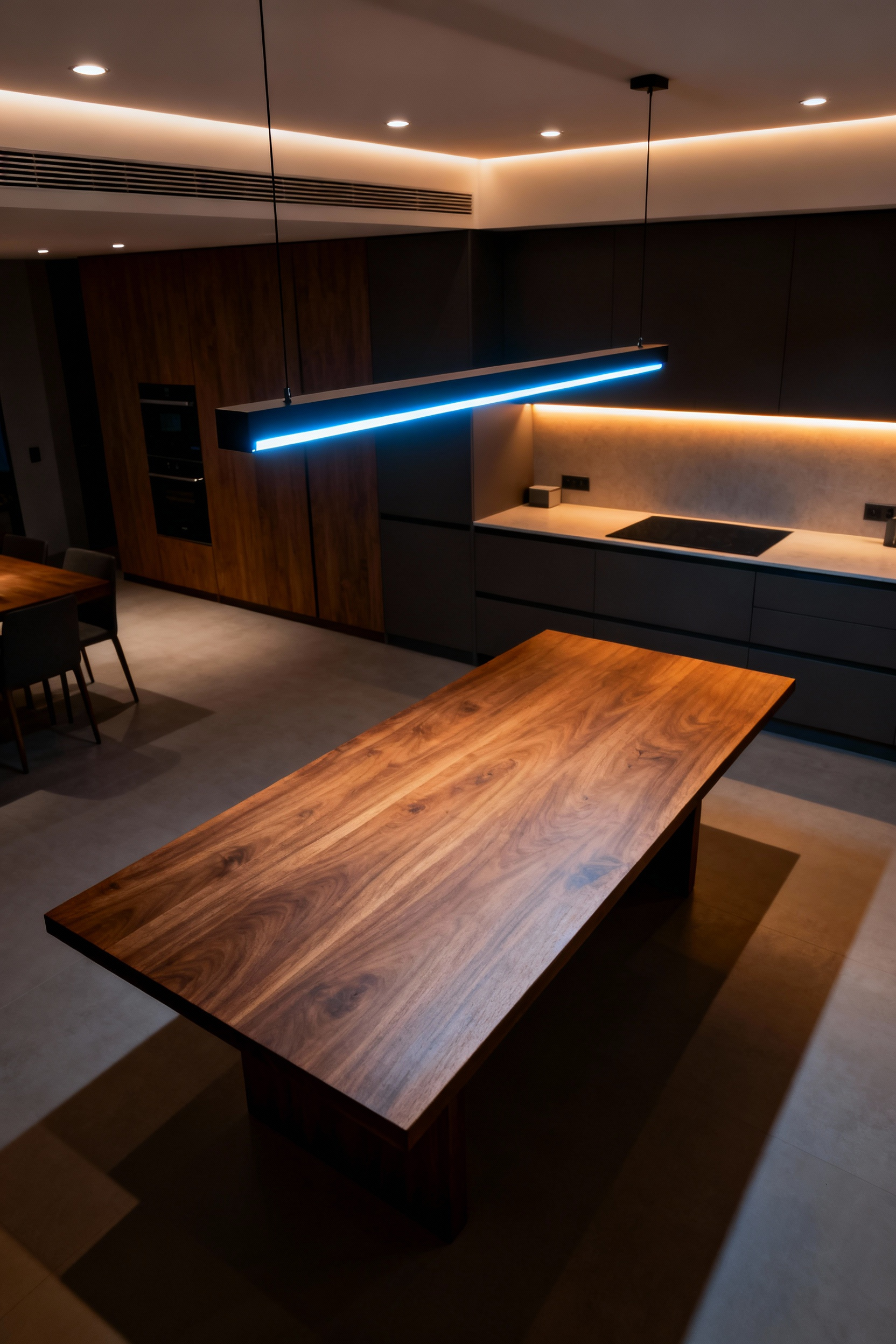
Always, always put your overhead light on a dimmer switch. This is my number one piece of lighting advice. It gives you the power to go from bright, functional light to a soft, ambient glow with a simple adjustment. This single feature allows your dining hub to adapt to any occasion, from a bustling brunch to a quiet, romantic dinner. It’s the easiest way to add layers of sophistication and versatility to your space.
9. Utilizing Extendable Designs: Maximizing Adaptability for Social Engagements
For anyone who loves to entertain but is short on space, an extendable table is a design marvel. It allows you to live comfortably with a smaller footprint for daily life, but gives you the freedom to host a crowd when the occasion calls for it. The magic is in the transformation—the feeling of being able to welcome everyone without compromise.
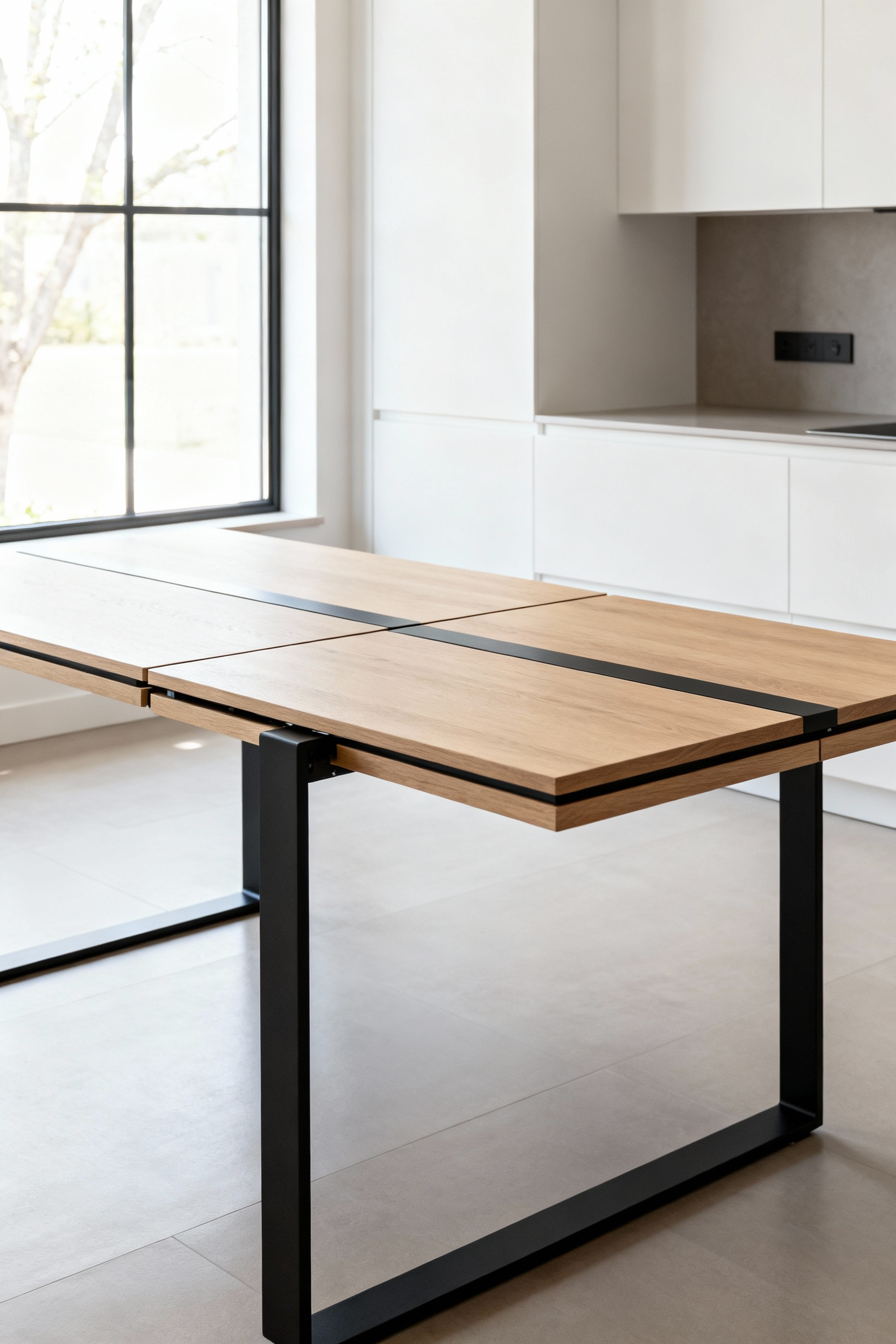
When choosing an extendable model, pay attention to the mechanism. A butterfly leaf that stores inside the table is brilliantly convenient, whereas a separate leaf needs a dedicated storage spot. Also, look at the table when it’s fully extended. Do the leaves match the grain and finish of the main surface? High-quality designs create a seamless look, ensuring your table is just as beautiful when it’s playing host to a crowd as it is during a quiet meal for two.
Elevating Your Modern Kitchen Table Approach (Part 2)
As our lives become more fluid, our furniture must follow suit. The modern kitchen table is no longer just for eating; it’s a hard-working hub that needs to support all facets of our day.
10. Embracing Multifunctionality: Tables Designed for Dining, Work, and Prep
The kitchen table has become the ultimate multi-tasker. It’s where we dine, but it’s also where we work from home, where kids do their homework, and where we spread out ingredients for a big baking project. Acknowledging this reality is the first step toward choosing a table that can handle it all. Durability is key. A surface that’s non-porous and resistant to scratches and heat, like quartz or a high-quality laminate, can transition from laptop station to chopping station without fear.
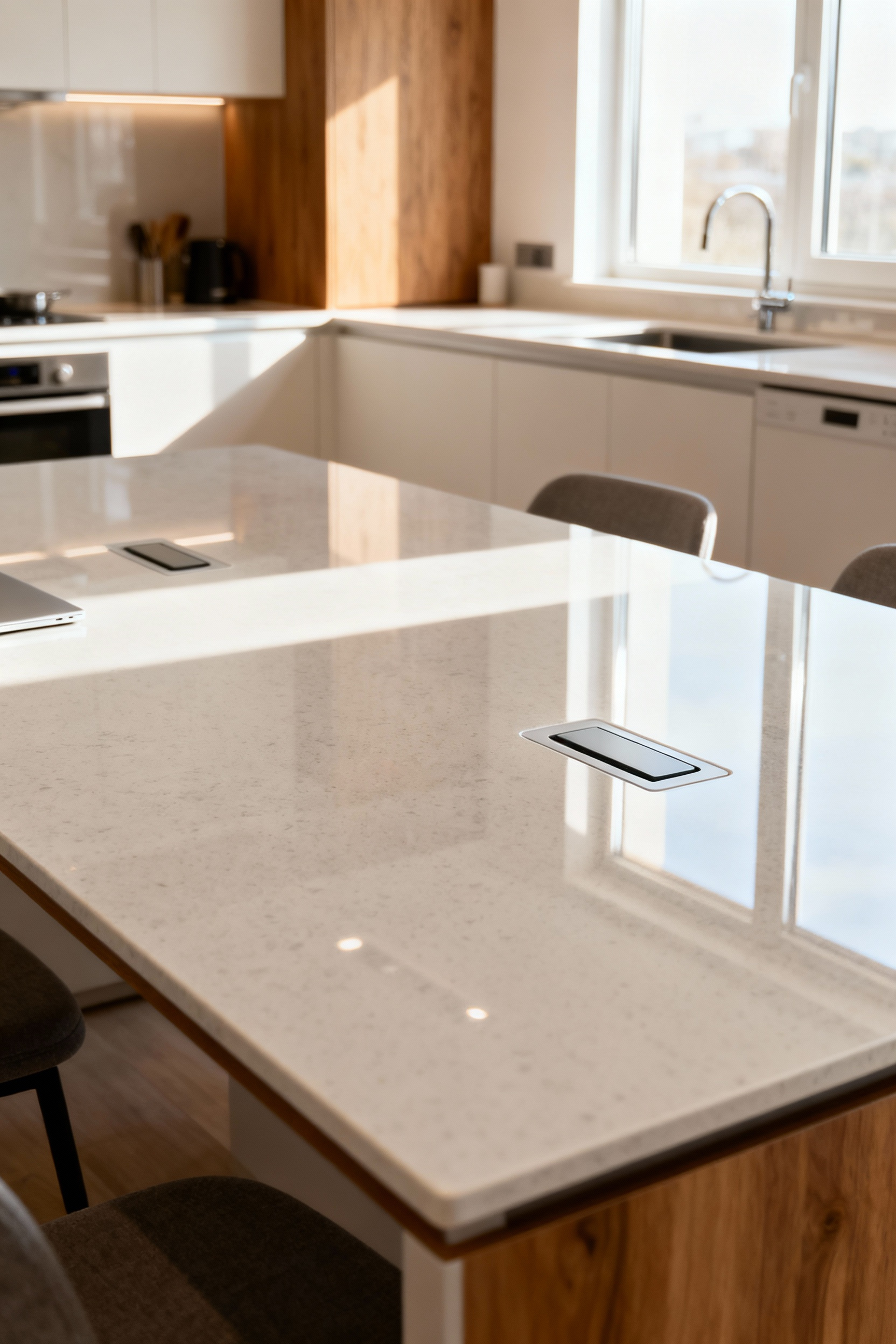
Look for subtle features that support this versatility. Some modern kitchen tables come with built-in, discreet cable management to hide charger cords, or shallow drawers for stashing pens and papers when it’s time to set the table for dinner. This isn’t about compromising on style; it’s about smart design that recognizes the table as the true centerpiece of a dynamic, modern home.
Advanced Modern Kitchen Table Strategies (Part 1)
Now we’re moving into the realm of truly sophisticated design, where every choice is made with an eye toward creating a space that feels seamless, personal, and deeply functional.
11. Designing for Flow and Traffic: The Invisible Pathways Around Your Table
Great design is often invisible. It’s in the way you can move through a space without thinking, where everything feels naturally placed. This is especially true around your kitchen table. We’ve talked about basic clearances, but now let’s think about primary traffic patterns. Is your table between the back door and the rest of the house? Does the path from the fridge to the sink cut right past a corner chair?

Visualize these pathways and ensure they remain wide and clear. This is where a round or oval table can be a problem-solver, as eliminating sharp corners can dramatically improve the flow in a tight spot. Your table shouldn’t be an obstacle; it should be an anchor that helps organize movement around it, making the entire kitchen feel more intuitive and gracious.
12. Custom Commissioning: Tailoring Specifications for Unique Architectural Spaces
Sometimes, a standard-issue table just won’t do. If you have an awkward nook, a dramatically open-plan space, or a very specific vision, commissioning a custom piece can be a transformative investment. This process allows you to dictate the exact dimensions, materials, and design details to create a table that is perfectly tailored to your home’s unique architecture.

Working with a skilled craftsperson is a collaborative journey. You can choose the specific slab of wood, select a custom metal finish, or design a base that perfectly complements your other furniture. The result is more than just a table; it’s a piece of functional art and a future family heirloom that tells the story of your home and your style in a way that no off-the-shelf piece ever could.
13. Sustainability in Design: Selecting Ethically Sourced and Recycled Materials
A thoughtful home is increasingly a sustainable one. When choosing a modern kitchen table, you have a wonderful opportunity to make an ethical and environmentally conscious choice. Look for tables made from reclaimed wood, which brings with it a rich history and prevents old timber from going to a landfill. Or consider tables crafted from recycled materials like steel or glass.
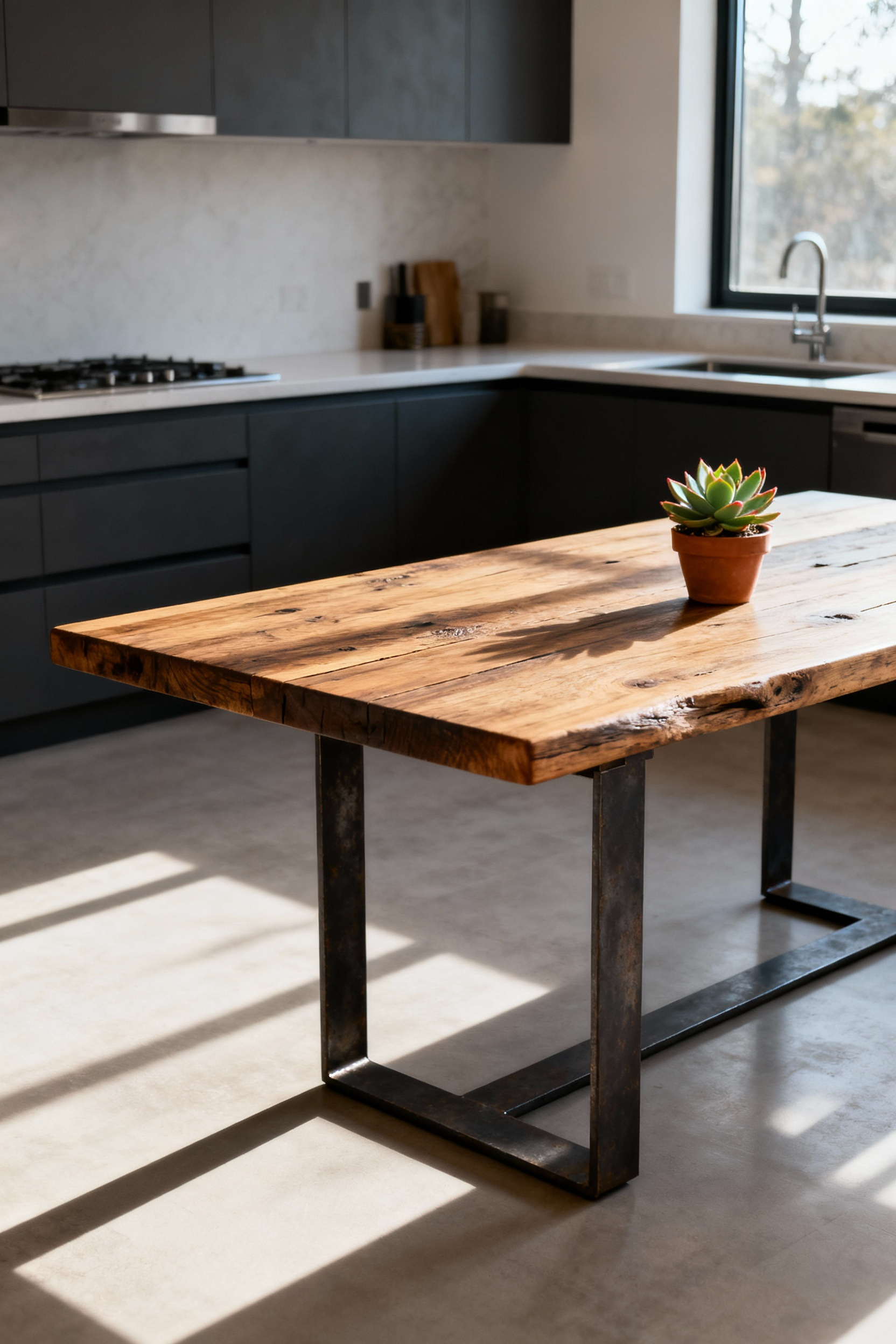
Also, ask about the origins of new materials. Is the wood certified by the Forest Stewardship Council (FSC), ensuring it comes from a responsibly managed forest? Are the finishes low-VOC (Volatile Organic Compounds), which is better for your home’s indoor air quality? A beautiful table that’s also kind to the planet feels good on a whole other level, bringing a sense of integrity and intention to the heart of your home.
14. The Art of Negative Space: How Surrounding Emptiness Enhances Table Presence
What surrounds your table is just as important as the table itself. Negative space—the “empty” area around a piece of furniture—is a powerful design tool. Giving your table ample breathing room allows its shape and materials to be fully appreciated. It prevents a room from feeling cluttered and transforms your table from just another object into a sculptural focal point.

Don’t be afraid of the void. Instead of filling every corner, allow the space around your modern kitchen table to remain open. This creates a sense of calm and luxury, allowing the eye to rest and appreciate the beauty of the piece you’ve chosen. A table that is beautifully framed by negative space will always have more impact than one that is crowded by its surroundings.
Advanced Modern Kitchen Table Strategies (Part 2)
Connecting our homes to the natural world is more than a trend; it’s a deep-seated human need. Infusing these principles into your kitchen can create a space that feels not just stylish, but truly restorative.
15. Leveraging Biophilic Design Principles: Connecting Interiors with Natural Elements
Biophilic design is the practice of connecting our built environments with nature, and your kitchen table is the perfect place to start. The simplest way is to choose a table made from natural materials—the visible grain of solid wood or the unique veining of natural stone immediately creates a connection to the earth. It brings an organic, calming element into the busiest room of the house.
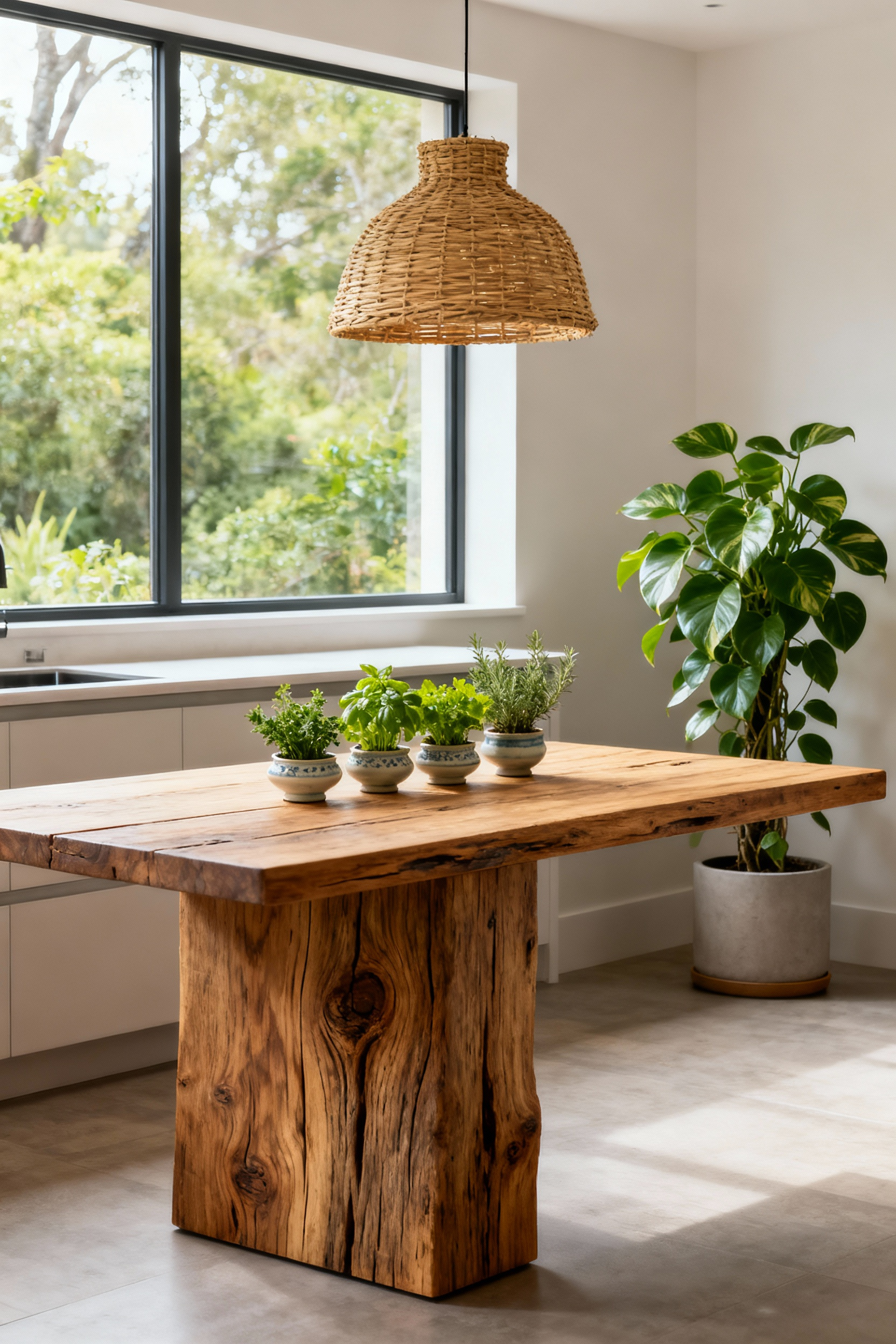
Elevate this by considering what’s on and around the table. A simple bowl of seasonal fruit, a vase of fresh-cut branches, or a few small potted herbs do more than just decorate; they infuse the space with life. Positioning your table to have a view of a garden or even just the sky can also strengthen this connection. A modern kitchen table that embraces these principles becomes more than a dining surface; it becomes a small sanctuary.
Mastering Modern Kitchen Table Integration (Part 1)
As we look to the future, the kitchen table is evolving into an intelligent, responsive hub. This is where cutting-edge technology and artistic vision converge to create spaces that are both beautiful and brilliantly efficient.
16. Integrating Smart Technology: Wireless Charging and Embedded Control Panels for Seamless Living
Technology is becoming seamlessly woven into the fabric of our homes, and the modern kitchen table is no exception. Imagine the quiet convenience of a wireless charging pad embedded right into the surface—no more hunting for cables or cluttering your counter space. It’s a small upgrade that simplifies a daily routine.

For a more advanced integration, some tables now offer discreet, built-in control panels that can manage your home’s smart lighting, music, or even appliances. This transforms the table into a subtle command center for your environment. The goal of this technology isn’t to be flashy; it’s to be invisible and intuitive, removing friction from your day and making your home work more intelligently for you.
17. Curating Artistic Resonance: Using the Table as a Sculptural Statement
Why shouldn’t your table be a piece of art? Choosing a design with a strong, sculptural presence can elevate your entire kitchen. Think of tables with dramatic, architectural bases, or those made from a single, stunning slab of live-edge wood. The table becomes the focal point that the rest of the room orbits around.

When you treat the table as sculpture, you begin to curate the space around it differently. You might choose simpler chairs to let the table shine, or select a dramatic light fixture to highlight its form. It’s a bold approach that makes a powerful statement, declaring that even the most functional pieces in our homes can be objects of great beauty.
18. Anticipating Future Trends: Modular Innovations and Dynamic Surface Transformations
The future of furniture is flexible. We are moving toward modular designs that can adapt to our changing needs. Imagine a modern kitchen table with components that can be reconfigured, allowing it to grow or shrink, or even change shape. This kind of innovation offers a truly sustainable approach, allowing a single piece of furniture to serve a lifetime of different functions.
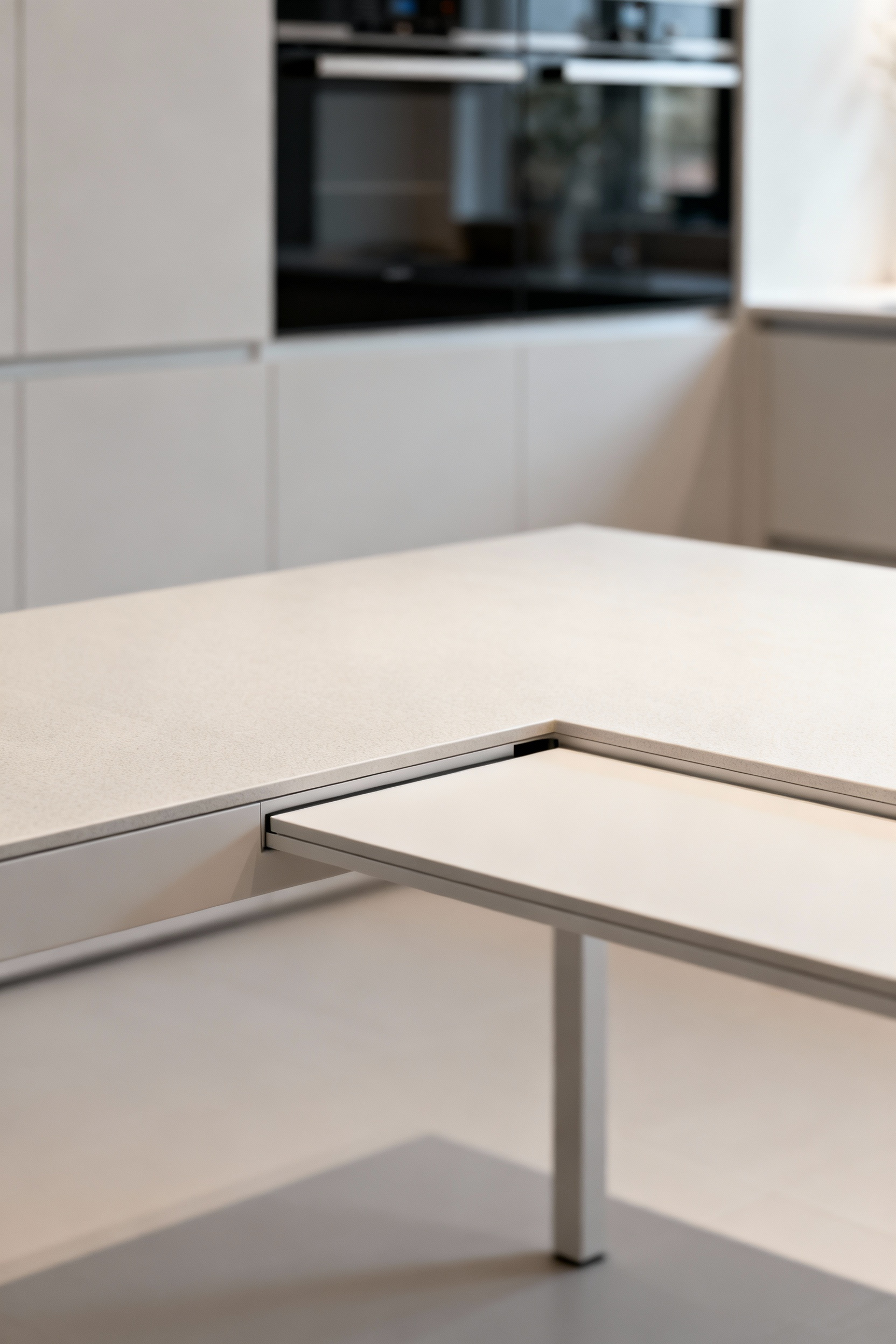
Even more exciting are dynamic surfaces. We’re beginning to see tables with integrated induction cooktops that are completely invisible when not in use, creating a seamless surface for dining or prep. Others might have zones that can be heated to keep dishes warm or cooled to chill drinks. This isn’t science fiction; it’s the next wave of design that blends utility and magic, making our kitchens more capable and wondrous than ever before.
19. Harmonizing Across Open Concepts: Extending Table Aesthetics into Adjacent Zones
In an open-concept home, your kitchen table plays a vital role in creating visual harmony. It acts as a bridge, connecting the kitchen zone to the living or dining area. The key is to create aesthetic echoes between the spaces. The wood of your table might pick up the tone of your living room mantelpiece, or its metal legs could coordinate with your light fixtures.
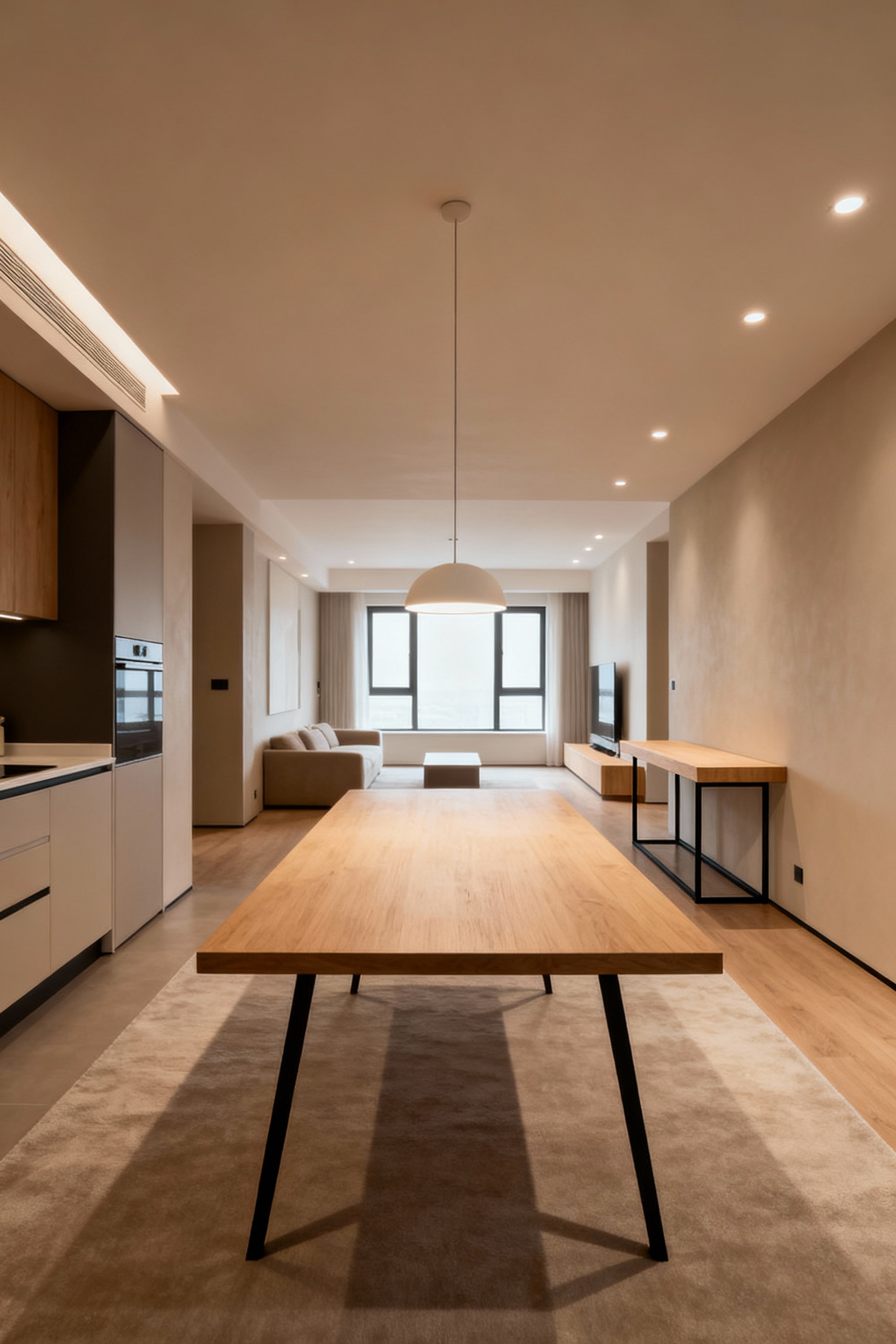
This creates a subtle but powerful sense of cohesion, making the entire open-plan area feel like a single, thoughtfully designed space rather than a collection of separate zones. The modern kitchen table isn’t just for the kitchen; it’s a crucial piece in the design puzzle of your entire living area, helping to tell a unified story of style and comfort throughout your home.
Mastering Modern Kitchen Table Integration (Part 2)
Ultimately, the best designs are about more than just how a room looks; they’re about how it feels and how it supports the life lived within it. The kitchen table is the ultimate example of this principle in action.
20. The Philosophy of the Culinary Hub: Designing for Experience Beyond Function
Let’s be honest: a kitchen table is never just a table. It’s the silent witness to our lives. It’s where we lay down the mail after a long day, where we help with homework, where we laugh so hard we cry over a shared meal with friends. It’s a stage for daily rituals and milestone celebrations. Designing with this in mind—designing for the experience—is the final and most important step.
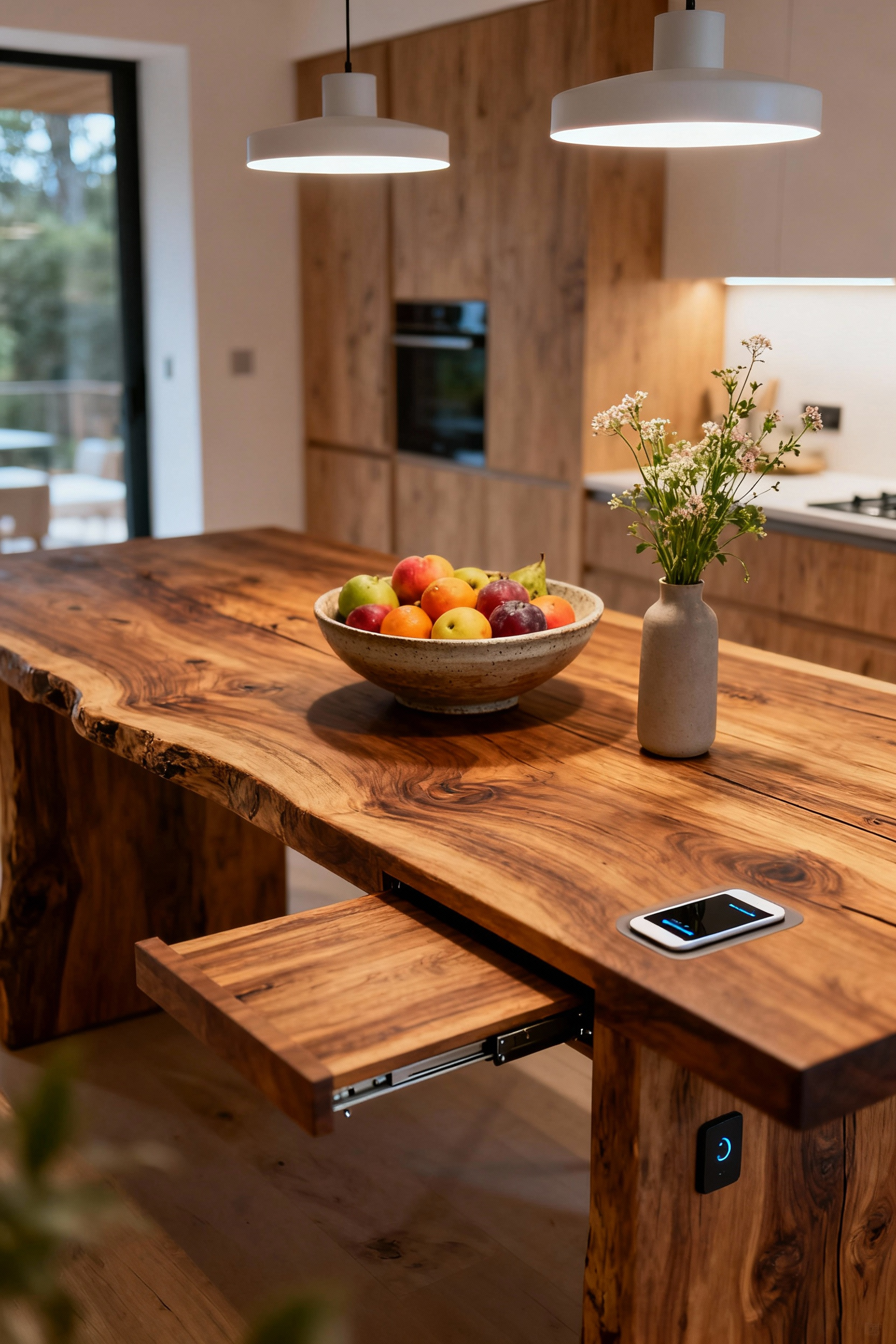
This means choosing a modern kitchen table that feels good to the touch, one that invites you to linger. It means creating an environment around it that is comfortable and welcoming. From years of dining room styling, I can say with certainty that a table’s true success is measured in memories, not just in style points. When you see your table as the emotional anchor of your home—a true culinary hub—you’ll choose a piece that not only looks beautiful but feels like a fundamental part of your family’s story.
Conclusion
After walking through these strategies together, from the foundational importance of size and material to the nuanced art of creating a true culinary hub, I hope you feel empowered. The search for the perfect modern kitchen table isn’t about finding a flawless object, but about finding the right partner for your home’s story. It’s about balancing the sleek lines of modern design with the beautiful, chaotic reality of everyday life.
Whether you’re drawn to the enduring warmth of wood, the cool sophistication of stone, or the clever adaptability of an extendable design, trust that you now have the knowledge to make a choice that is both stylish and profoundly practical. Remember that this table will be the backdrop for so much more than meals. It will be a foundation for connection, creativity, and comfort for years to come.
So go forward with confidence. Choose the modern kitchen table that speaks to you, the one you can already imagine surrounded by the people you love. Invest in the piece that will not only elevate your kitchen but will enrich your life, becoming the hardworking, beautiful heart of your home, one memorable gathering at a time.
